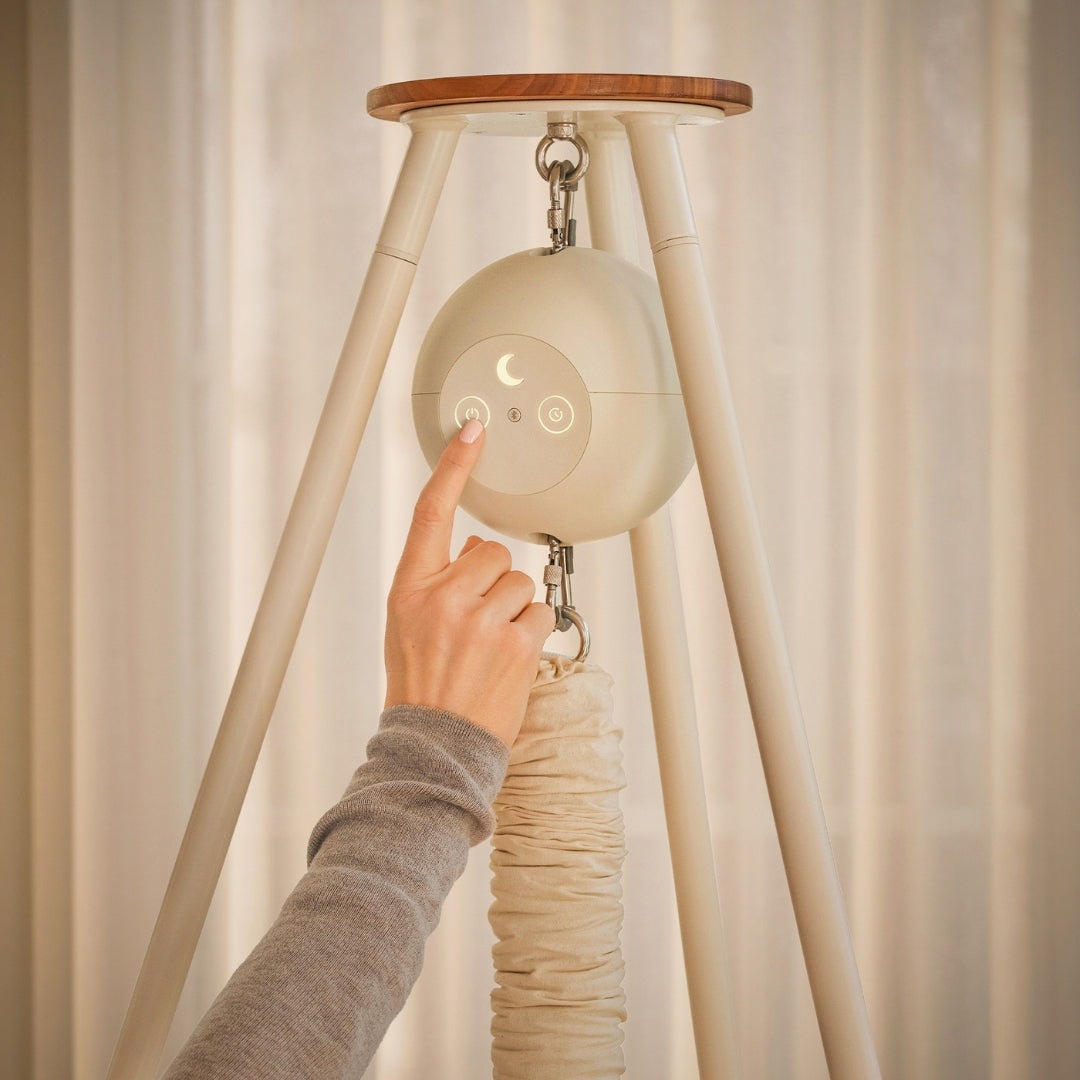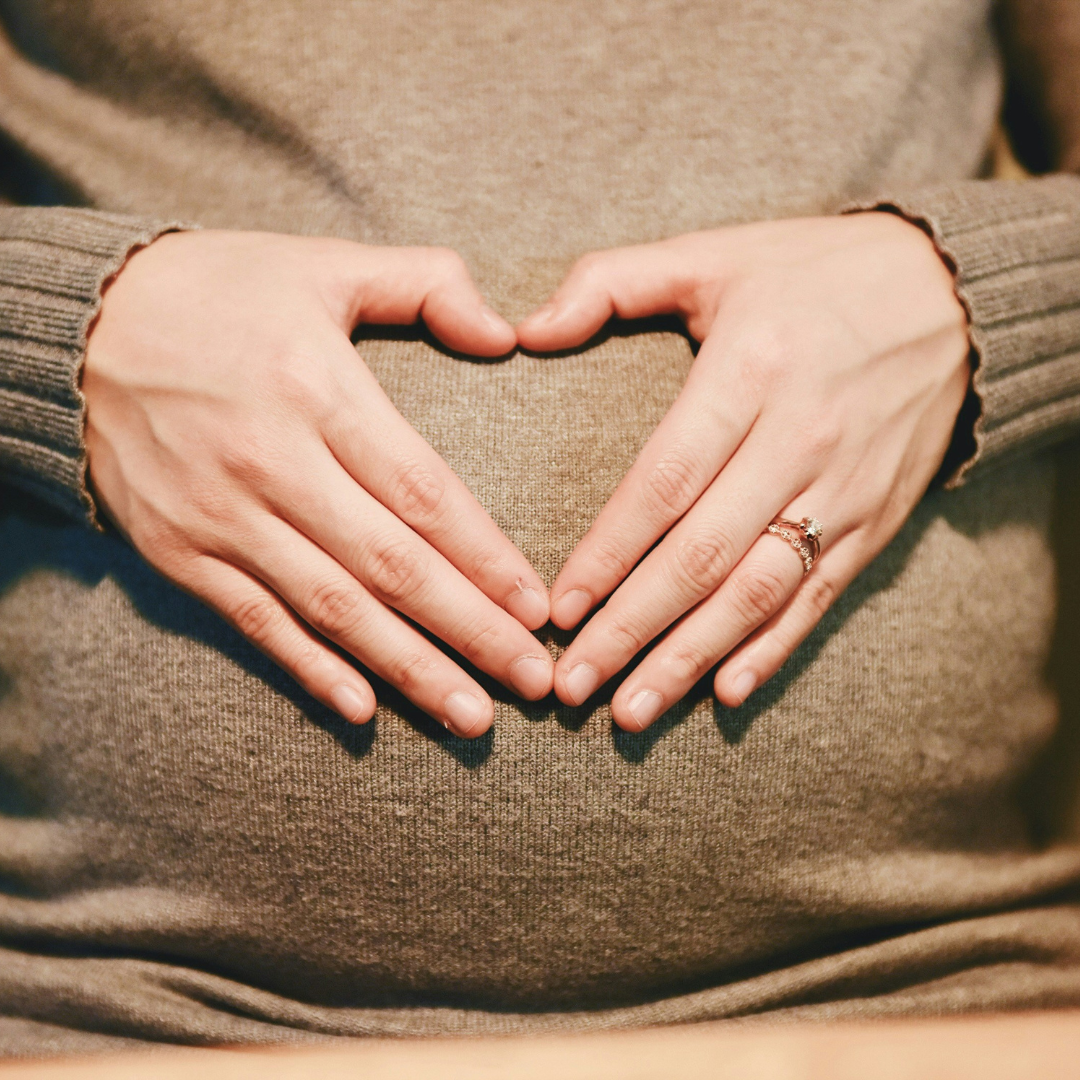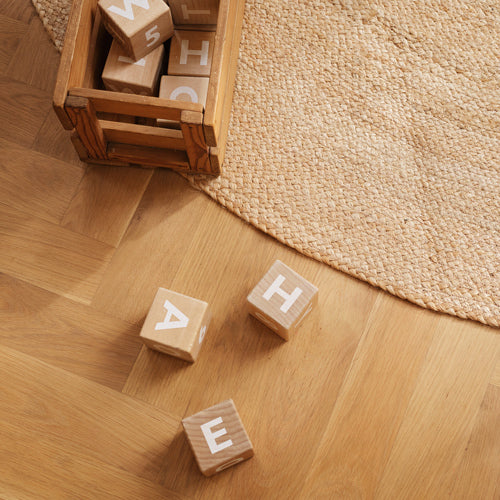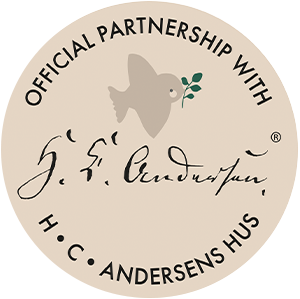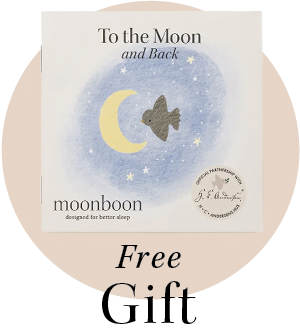Baby Carrier
Easily adjustable for the best experience and ultimate comfort, our ergonomic baby carrier, developed with baby-wearing experts, allows you to enjoy bonding with your little one on the go, whilst promoting their hip health and allowing you to have a hands-free experience.
- Ergonomic and stylish design, featuring our signature harlequin stitching
-
Magnetic buckles for effortless, strain-free ins and outs
-
Safety tested and approved in accordance with the European EN 13209-2:2015 standard
Our baby carrier was designed to bring maximum comfort and convenience to your parenting journey, no matter where you are. Designed with a baby-carrying expert and created with a focus on hip comfort for baby and back support for parent, it allows for both front-facing and parent-facing carrying, so you can adapt as your baby grows and their curiosity evolves.
The baby carrier features magnetic buckles, making it easy to get your baby in and out of the carrier without twisting or straining your body, as well as being equipped a practical pocket to keep essentials within reach. It is designed for children between 5-15kgs (11-33lbs), typically aged 3-30 months and has been safety tested and approved in accordance with the European EN 13209-2:2015 and US American ASTM F2236 standards.
The carrier has been designed for maximum comfort and support for both parent and child during the carrying experience. It features a detachable hood for your little one to protect them from rain, sun, and wind, as well as a quilted neck cushion to safely support their head.
Additionally, the carrier has been fitted with an adjustable belt for maximum support, allowing you to distribute your little one’s weight more evenly and ensure comfort even during periods of extended wear. The carrier’s adjustable features not only enable a comfortable carrying experience, but also two-way carry, whilst supporting a healthy hip placement for the little one, as well as safety buttons on the side to secure the leg openings.
Enjoy freedom of movement and maximum comfort, whilst keeping your baby close, thanks to our baby carrier, designed for the ultimate carrying experience.
Included:
1 x Baby Carrier
Color:
Light grey
Material:
97% organic cotton, 3% elastane
Warnings and Safety Information:
Only use this carrier for children between 11lb and 33 lb (5 kg - 15 kg). Do not use the carrier if your child does not match this weight range.
Appropriate age range: 3-30 months.
For low birthweight babies and children with medical conditions, a strong recommendation is given to seek advice from a health professional before using the product.
Safety tested and approved according EN 13209-2:2015 and ASTM F2236.
Always read the user manual carefully before use. If you have any further questions you can always read more in our FAQ below.
Care:
We advise to avoid washing the baby carrier frequently, but if you wish to wash it, we advise washing by hand at 30 degrees Celsius and removing all detachable elements such as the hood beforehand.
Do not bleach, tumble dry or flat iron
Wash with similar colors
Product features:
•Unisex
•Size adjustable
•Detachable baby hood
•Quilted neck cushion for head support
•Quilted and padded adjustable waist belt for lumbar support
•Quilted shoulder pads for additional comfort
•Magnetic buckles for easy fastening
•Front and back regulation and adjustable straps
•Padded leg openings
Our baby carrier has been designed in collaboration with a child carrying expert to deliver the ultimate ergonomic comfort for both parent and baby. Every feature—from hip support for your baby, to back comfort for you—has been thoughtfully crafted to create a safe, supportive, and intuitive baby-carrying experience.
To ensure your baby is carried safely and comfortably, we recommend always follow the T.I.C.K.S. guidelines:
T: Tight
Your baby should be held tightly against your body in the carrier. A snug fit ensures they are supported and secure.
I: In View at All Times
You should always be able to see your baby’s face by simply glancing down.
C: Close Enough to Kiss
Your baby’s head should be as close to your chin as comfortable. You should be able to easily kiss the top of their head.
K: Keep Chin Off the Chest
Make sure your baby’s chin is not pressed against their chest. There should be at least a finger’s width of space under their chin to allow for clear breathing.
S: Supported Back
Your baby’s back should be well supported in a natural position. The carrier should hold them close with their tummy against you.
Safety First
Our baby carrier is tested and approved to meet European EN 13209-2:2015 and American ASTM F2236 standards for safety, so you can carry your baby with total peace of mind.
Shipping is free to parcel shops on all orders above 250 EUR. For orders below 250 EUR, see the list of shipping rates here.
All orders are prepared with great care and shipped from our warehouse within 1-2 business days - please note that in periods of high order volume or during holiday and vacation periods, delays may occur.
You have the right to return your order within 14 days of having received it. Returns are administered through our return portal. A small fee will be deducted for shipping when you use the portal for your return.
Import duties and/or taxes may arise when ordering from outside the European Union, Norway or Switzerland.
OTHERS ALSO VIEWED
FROM IDEA TO REALITY
A couple of years ago, after the launch of the Moonboon Baby Wrap, a babywearing expert shared a thought that stuck around: there simply weren’t many baby carriers that were truly comfortable, aesthetic, and ergonomically designed. That idea became the starting point for something new.
Countless designs were tested, adjusted, and tested again — all with one goal in mind: to create a baby carrier that not only looks good, but provides proper support for both baby and parent.
The result is the Moonboon Baby Carrier. Thoughtfully designed for everyday life, with features like magnetic buckles, a detachable hood, and a built-in pocket — all while keeping comfort and ergonomics at its core.




ADDITIONAL COMFORT FEATURES
Magnetic buckles: The magnetic buckles make it easy to get your baby in and out of the carrier – without twisting or straining your body.
Hip-healthy positioning: Our carrier promotes the M-shaped “frog leg” position for hip support and features adjustable leg openings with safety buttons for secure support.
Back Support for Parents: A broad, adjustable waistband helps distribute weight evenly across your hips and back for long-lasting comfort and to avoid any back pain when carrying for longer periods of time.
Hands-Free Movement: Keep your baby close while having full freedom of movement.
Practical Pocket: A discreet pocket behind the hood keeps essentials like keys or pacifiers within easy reach.
Weather-Ready: The detachable hood protects from the elements, making the carrier ideal for any adventure.
If it's not safe, we don't sell it
CHOOSE SAFETY
You never compromise on your baby’s safety, and we don’t either! Therefore we have created an overview of important things to keep in mind when shopping baby sleep products, so that you and your baby can sleep soundly.
FREQUENTLY ASKED QUESTIONS BAOUT BABY CARRIER
WHEN CAN BABY FACE FORWARD IN THE BABY CARRIER?
Babies can start facing forward in a carrier once they have strong and steady head and neck control — usually around 4 to 6 months of age. A good sign your baby is ready is when they’re past the “bobblehead” stage and can hold their head up confidently for extended periods.
CAN THE BABY CARRIER BE WORN ON THE BACK?
No, the Moonboon baby carrier is made for front carrying only. It’s designed to support your baby safely and comfortably on your front, and should not be used on your back.
IS THE MATERIAL STRETCHY?
No, the baby carrier is made of woven organic cotton to be soft to the touch but sturdy enough to comfortably and securely keep the baby in place within the carrier and on the parents chest.
IS IT SAFE TO USE A BABY CARRIER?
Yes, the Moonboon baby carrier is safe to use when properly worn. It supports your baby in a natural seated position, keeping their back supported and legs in the recommended “M” shape. The carrier keeps your baby close to your body, which helps with bonding and allows you to easily monitor their breathing and comfort.
HOW CAN I TELL IF THE BABY CARRIER IS TOO TIGHT?
A properly fitted carrier should feel snug but not restrictive. Your baby should be high enough on your chest that you can easily kiss the top of their head, and their head should rest comfortably just below your chin.
You should be able to take a deep breath without feeling restricted, and gently leaning forward shouldn't cause your baby to pull away from your body or slump forward — if it does, the carrier may be too loose.
Also check that your baby’s legs move freely in the “M” position and that you can slide a finger between their chest and the carrier to ensure comfort and clear breathing. Keep an eye on their posture and adjust as needed.
CAN THE BABY CARRIER HURT MY BACK?
A baby carrier that is correctly fitted and adjusted should not cause back pain. If you do experience discomfort, it’s often due to improper fit or use. Ensuring the right setup each time you wear the carrier is key to maintaining comfort and support.
Common causes of back discomfort include:
- A waistband that sits too low on the hips
- Shoulder straps that are too loose or uneven
- The baby being carried too low on the torso
- Incorrect positioning of the back strap connecting the shoulder straps
For optimal support, your baby should be carried high and close to your body, with all straps adjusted snugly and evenly. Taking a few moments to check these details before each use can make a noticeable difference in how the carrier feels during wear.
HOW OLD DO YOU HAVE TO BE TO USE THE BABY CARRIER?
Baby carriers are designed for adult caregivers, typically aged 18 or older. There are no specific age restrictions for using a baby carrier, but it's important to ensure that the caregiver is physically capable of safely carrying the baby and using the carrier correctly. Younger individuals should be properly trained and supervised when using a baby carrier to ensure the safety of both the caregiver and the baby.
If you have further questions or need guidance please reach out to our customer service team.
WHEN IS IT SAFE TO START USING A BABY CARRIER?
The Moonboon baby carrier is designed for use with children between 11 lbs (5 kg) and 33 lbs (15 kg), typically from 3 to 30 months of age. It is important not to use the carrier if your baby falls outside of this weight range to ensure safety and comfort.
For babies born with a low birth weight or children with any medical conditions, we strongly recommend consulting a healthcare professional before using the carrier. They can provide personalized guidance on whether it is appropriate for your child’s needs and development.
WHAT ARE THE DIFFERENT TYPES OF BABY CARRIERS?
There are several types of baby carriers, each offering different ways to carry your baby comfortably. Here are some common options:
- Baby Wrap: A long piece of fabric tied around your body to securely hold your baby. There are no buckles or clasps, just soft, adjustable fabric for a custom fit.
- Backpack Carrier: Designed for carrying older babies or toddlers on your back, usually with a sturdy frame and padded seat. Ideal for longer walks or hikes.
- Hip Seat Carrier: Allows you to carry your baby on your hip with a padded seat for added comfort. Great for short trips and quick adjustments.
- Sling Carrier: A simple fabric worn over one shoulder to create a pouch for your baby. Convenient for quick trips but best for shorter periods of use.
Each type offers unique benefits depending on your baby's age, comfort, and your lifestyle.
CAN BABY CARRIERS CAUSE HIP DYSPLASIA?
When used correctly, baby carriers should not cause hip dysplasia. The Moonboon baby carrier, support a natural "M" position, which helps in promoting healthy hip development. This position ensures that the baby’s knees are above their bottom and legs are comfortably spread apart, which is crucial for proper hip alignment.
It's important to remember that when babies are born, their bones and joints are still developing and will continue to mature for the first several months. During this critical time, it's essential to allow for proper movement and positioning to support the healthy development of their hip joints.
The Moonboon baby carrier is specifically designed to support this natural positioning, and is intended for use with children between 11 lbs (5 kg) and 33 lbs (15 kg), typically from 3 to 30 months of age. By following the guidelines and ensuring the baby is positioned properly, you can confidently support their hip health. If you have any concerns, it’s always a good idea to consult with a healthcare professional.
HOW DO I PROPERLY WEAR AND ADJUST THE BABY CARRIER?
Getting the right fit is key to comfort and support. A good rule of thumb is to position your baby at kissing height — you should be able to kiss the top of their head without straining. This also helps you find the correct position for the waist belt, which is often higher than you might expect.
Make sure the back strap (connection strap) sits comfortably between your shoulder blades. If it’s too high, it can strain your neck; too low, and it may cause back discomfort. The strap should be snug to keep the shoulder straps in place.
Use this 10-point check to ensure a proper fit:
For Baby:
- Head is properly supported
- Back supported in its natural curve
- Thighs fully supported, seated deeply
- Knees slightly outwards, lower legs free
- Face visible, airways clear
- Arms bent, inside and free to move
- Appropriate clothing for the weather
For You:
- Waistbelt at the right height (baby is close enough to kiss)
- Back strap sits across the middle of your shoulder blades
- Lumbar support is centered on your lower back
CAN I BREASTFEED WHILE USING THE BABY CARRIER?
Yes, breastfeeding in a baby carrier is possible and can be really convenient — it just takes a bit of practice and adjustment. Every parent and baby are different, so it may take some trial and error to find what works best for you.
Wearing a loose or low-cut top can help with access, and slightly loosening the shoulder straps will allow your baby to sit a bit lower for easier latching. Once your baby is finished nursing, be sure to reposition them into the upright carry position — close enough to kiss, with clear airways — and retighten the straps for proper support.
It may feel tricky at first, but many parents find that with time and patience, feeding on the go becomes second nature.
WHAT SHOULD I CONSIDER WHEN USING THE BABY CARRIER IN HOT WEATHER?
Using a baby carrier in warm weather is perfectly safe as long as you take some sensible precautions. Since babies can’t regulate their body temperature as effectively as adults, it’s important to help keep them cool and comfortable while you’re out and about.
Here are a few helpful tips to keep in mind:
- Dress smart: Opt for light, breathable fabrics like cotton or linen for both you and your baby. Functional, UV-protective fabrics are also a good option. Remember, the baby carrier itself acts as a layer of clothing — so both of you might need one layer less than usual. If you’re out for a longer stretch, bring a change of clothes in case your baby gets warm or damp.
- Keep a fabric layer between you: If you’re doing skin-to-skin contact, especially in hot weather, make sure there’s at least one light layer of fabric between you and your baby to prevent slipping and help with temperature regulation.
- Stay in the shade: Try to plan walks or outings during cooler times of the day — mornings or evenings — and stay in shaded areas whenever possible.
- Check baby’s temperature: A quick way to check if your baby is too warm is to feel the back of their neck or between their shoulder blades. Signs of overheating can include flushed skin, damp hair or clothing, rapid breathing, or irritability. If you notice these signs, take a break and cool down indoors or in a shaded area.
- Take breaks as needed: If either of you start feeling too hot or uncomfortable, it’s perfectly okay to take off the carrier and rest somewhere cool until you're both ready to continue.
HOW DO I CLEAN AND MAINTAIN MY BABY CARRIER?
To keep your baby carrier in good condition, we recommend avoiding frequent washing. When cleaning is needed, gently hand wash at 30°C using a mild, scent-free liquid detergent. Be sure to remove any detachable parts, such as the hood, before washing.
Do not use bleach or fabric softeners, as they can damage the fabric or irritate your baby’s skin. The carrier should not be tumble dried or ironed. Instead, let it air dry naturally, away from direct sunlight.
In between washes, you can spot clean with a damp cloth and mild soap.
HOW LONG CAN MY BABY STAY IN THE BABY CARRIER AT A TIME?
There is no set time limit for how long your baby can stay in the carrier as long as both you and your baby are comfortable and their needs are being met. Make sure your baby is getting regular opportunities for feeding, movement, and diaper changes.
Pay attention to your baby’s cues, as well as your own comfort. If everyone is content and well-supported, babywearing can be a safe and enjoyable part of your routine for extended periods throughout the day.
IS THE MOONBOON BABY CARRIER SUITABLE FOR TWINS?
No, the Moonboon baby carrier is not suitable for carrying twins.
CAN I USE THE BABY CARRIER WITH A PRETERM INFANT?
The Moonboon baby carrier is not recommended for preterm infants. It is specifically designed for babies between 11 lbs (5 kg) and 33 lbs (15 kg), typically from around 3 months of age. For preterm babies or those with specific medical needs, we strongly recommend consulting with a healthcare professional before using any baby carrier.
WHAT’S THE DIFFERENCE BETWEEN A BABY CARRIER AND A BABY WRAP?
Both baby carriers and baby wraps are designed to help you carry your baby close to your body, but they differ in structure and how they’re used.
A baby wrap is a long piece of soft fabric that you wrap and tie around your body to create a snug fit for your baby. It’s flexible and can be adjusted to fit all body types, but it takes a bit of practice to learn how to tie it correctly. Moonboon also makes baby wraps, find them here.
A baby carrier, is a more structured option with adjustable straps and buckles that make it quicker to put on and take off. It offers consistent support and is easy to adjust for different wearers, making it a popular choice for parents looking for convenience, comfort and longer use.
CAN THE BABY CARRIER BE USED FOR HIKING OR OUTDOOR ACTIVITIES?
Yes, the Moonboon baby carrier can be used for hiking or outdoor activities, but it’s essential to approach it with caution and good judgment. Make sure the carrier is properly adjusted for both your comfort and your baby’s safety, ensuring that they are securely positioned and supported. Be mindful of the weather—on warm days, keep your baby shaded and ensure they are dressed in breathable clothing to avoid overheating, and on cooler days, bundle them up appropriately.
Always listen to your baby’s needs and take breaks to check on their comfort, hydration, and temperature. Consider the duration of your outing as well—shorter trips are often easier to manage, especially with younger babies. Ultimately, trust your instincts and prioritize your baby’s safety and well-being while enjoying the outdoors.
HOW DO BABY CARRIERS AFFECT A CHILD’S DEVELOPMENT?
Babywearing is not just about comfort and convenience, it is also great for your baby’s emotional and social development. Being close to you helps your little one feel secure and loved, which builds a strong bond and attachment. This closeness can reduce stress and help them feel calmer and safer in the world around them.
It is also great for your baby’s brain development. As you go about your day, your baby is exposed to all kinds of sights, sounds, and experiences that help stimulate their mind. It’s like a mini learning experience happening all around them.
On top of that, babywearing can help soothe a fussy baby. The gentle rocking and the warmth of your body can mimic the comforting motions and sounds they experienced in the womb. Plus, it can help promote better sleep patterns, giving both of you a bit of relief when things get tough.
WHAT ARE THE SIGNS OF A POORLY FITTING BABY CARRIER?
A poorly fitting baby carrier can cause discomfort for both you and your baby. Here are some signs to look out for:
- Discomfort or pain: If you are experiencing pain in your back, shoulders, or hips, the carrier might not be adjusted properly or may be putting too much pressure on certain areas.
- Froggy legs: Your baby should be in the “M” position, with their knees higher than their bottom, in a natural, squatted posture. If their legs are spread out too wide, or if they’re in a straight-legged position, this could indicate an improper fit and could lead to discomfort or potential hip issues.
- Baby is too low or too high: If your baby is positioned too low, they may be hard to reach or kiss. If they’re too high, it could strain their neck or cause discomfort.
- Difficulty breathing or visible discomfort: If your baby’s breathing appears labored, or they seem overly fussy, the carrier might be too tight or not adjusted correctly. Always check that your baby’s chest isn't restricted, and that their airways are clear.
- Slipping or sliding: If your baby is sliding down in the carrier or you have to keep readjusting them, the straps or waist belt may not be tight enough, or the carrier might not be properly positioned.
HOW CAN I TRANSITION MY BABY FROM A WRAP TO A STRUCTURED BABY CARRIER?
Many parents start with a wrap for the newborn stage and move to a structured carrier as their baby grows. To make the switch, start slow and pay attention to how your baby reacts. If it does not go smoothly the first time, just give it another try. Over time, your baby will get used to it and you'll both find a routine that works.
SHOULD I CHOOSE A BABY WRAP OR A BABY CARRIER?
When it comes to choosing between a baby wrap and a baby carrier, it really depends on what works best for you and your baby. There's no one-size-fits-all solution. A baby wrap is great for those early months when you're mostly at home. Its soft, flexible fabric offers a cozy, close bond with your baby. However, as your baby grows, many parents find that transitioning to a structured baby carrier is more comfortable. The carrier’s design offers more support and better weight distribution, which is especially helpful as your baby gets bigger.
Both options serve the same basic purpose: to let you carry your baby while keeping your hands free. Baby carriers usually have straps and buckles to keep your baby securely in place, while wraps use one long piece of fabric to hold your baby against your body. Baby carriers are more structured and can handle more weight, making them ideal for larger babies and toddlers. However, wraps can work well into the toddler stage too, depending on your preference. Ultimately, it's all about what feels most comfortable for you and your baby.
HOW DO I PUT ON THE BABY CARRIER?
To put on the Moonboon baby carrier, follow these steps:
- Start with the waist belt: Place the waist belt around your waist, making sure it sits snugly just above your hips. This helps evenly distribute your baby’s weight.
- Put the shoulder straps on: Place the shoulder straps over your shoulders, adjusting them so that they sit comfortably. They should be snug but not too tight.
- Position your baby: Gently lift your baby and place them in the carrier. Depending on the carrying position you're using (front-facing, inward-facing, etc.), make sure your baby’s legs are in the correct "M" position.
- Adjust the straps: Tighten the shoulder straps and waist belt to ensure the carrier fits securely. You should be able to kiss the top of your baby’s head without having to lean forward.
- Check Your baby’s position: Make sure your baby’s arms and legs are tucked into the carrier, and that their back is fully supported. Fit two fingers around your baby’s face to make sure there is enough space for comfortable breathing.
- Final adjustments: Once you’ve made sure everything is in place, give your straps a final adjustment so the carrier feels secure and comfortable for both you and your baby.


